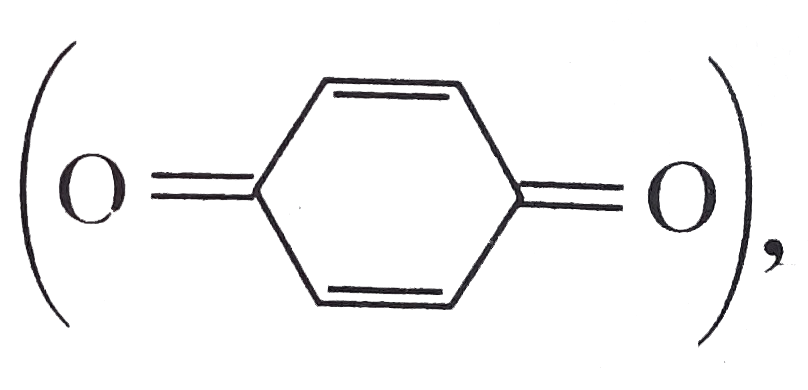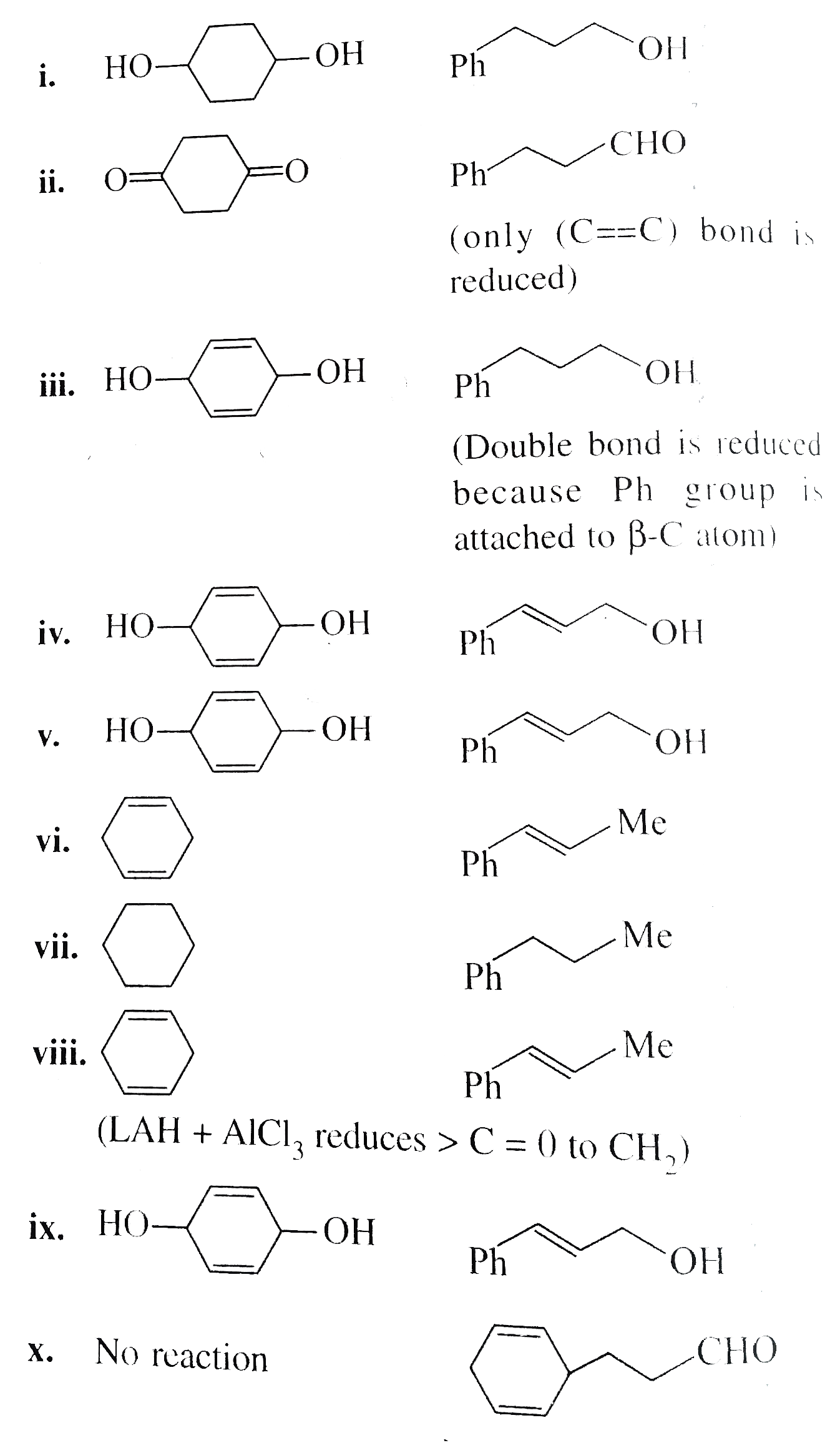Give the products of
a. p-Benzoquinone

and
b. PhCH=CH−CHO with
i. H2+Pt
ii. H2+Pd−C(1atm)
iii. LAH
iv. NaBH4
v. Zn+HAc
vi. NH2NH2+KOH+glycol+Δ
vii. HI+P
viii. LAH+AlCl3
ix. (Me2CHO−)3Al+Me2CHOH
x. LiorNa,liq.NH3+EtOH
xi. Na+EtOH

Birch reduction only terminal (==) bond with CHO group, it is terminal (=) bond.
(Birch reduction does not reduce isolated double bond and also >C=0 group.)

Topper's Solved these Questions
- REDUCTION AND OXIDATION REACTION OF ORGANIC COMPOUNDSBOOK - CENGAGE CHEMISTRYCHAPTER - REDUCTION AND OXIDATION REACTION OF ORGANIC COMPOUNDSEXERCISE - Solved Example
6 Videos
- REDUCTION AND OXIDATION REACTION OF ORGANIC COMPOUNDSBOOK - CENGAGE CHEMISTRYCHAPTER - REDUCTION AND OXIDATION REACTION OF ORGANIC COMPOUNDSEXERCISE - EXAMPLE
1 Videos
- QUALITATIVE INORGANIC SALT ANALYSISBOOK - CENGAGE CHEMISTRYCHAPTER - QUALITATIVE INORGANIC SALT ANALYSISEXERCISE - Viva Voce Questions And Part-C (Analysis Of Cations)
42 Videos
- SOLID STATEBOOK - CENGAGE CHEMISTRYCHAPTER - SOLID STATEEXERCISE - Ex 1.2 (Objective)
9 Videos
Similar Questions
Classify the following into polar and non-polar molecules:
(i) CO2, (ii) CHCI3, (iii) CCI4, (iv) CH3OCH3,
(v) C2H5OH, (vi) C2H6, (vii) CH2CI2, (viii) NH3, (ix) H2O, (x) CH3CI.
View SolutionWrite the structure of the main products when ethanal (CH3CHO) reacts with the following regents :
(i) HCN , (ii) NH2−NH2/H+ , (iii) LiAlH4
View Solution
Knowledge Check
The decresing fugacity order of the following is:
i. Me2N−Nme2, ii. MeNH−NHMe
iii. H2N−NH2, iv. NH3A(i)>(ii)>(iii)>(iv)B(iv)>(iii)>(ii)>(i)C(iv)>(iii)>(i)>(ii)D(iii)>(iv)>(ii)>(i)The decrasing basic order of the following is:
i. Me2N−Nme2, ii. MeNH−NHMe
iii. H2N−NH2, iv. NH3A(i)>(ii)>(iii)>(iv)B(iv)>(iii)>(ii)>(i)C(iv)>(iii)>(i)>(ii)D(iii)>(iv)>(ii)>(i)
Write the structures of the main products when CH3CH2CHO reacts with the following :
(a) Zn−Hg/ conc. HCl (b) H2N−NH2/H+ (c ) HCN
View SolutionThe decrasing basic order of the following is:
i. Me2N−NMe2, ii. MeNH−NHMe
iii. H2N−NH2, iv. NH3
View SolutionThe decresing fugacity order of the following is:
i. Me2N−Nme2, ii. MeNH−NHMe
iii. H2N−NH2, iv. NH3
View SolutionCalculate the oxidation number of
(i) S in H2S,
(ii) C in CO2
(iii)C in CH2CI2,
(iv) N in (NH4)SO4
(v)P in Na3PO4
View SolutionCalculate the oxidation number of
(i) S in H2S,
(ii) C in CO2
(iii)C in CH2CI2,
(iv) N in (NH4)SO4
(v)P in Na3PO4
View SolutionGive the products of the following compounds reduced with:
a. NaBH4/MeOH
b. LAH/ether
c. H2/Ni,Δ, 100 atm or H2/Pt+Al2O3, Δ, 35 atm.

View Solution
